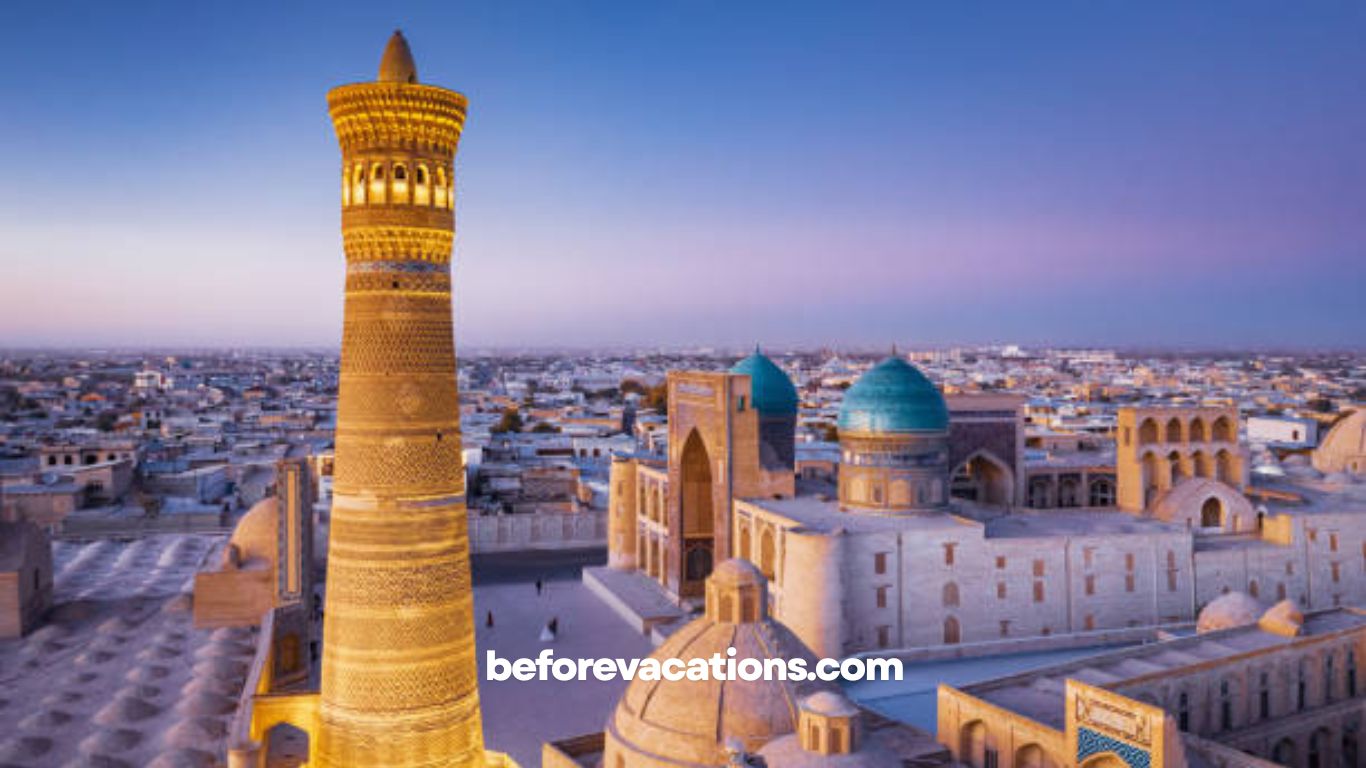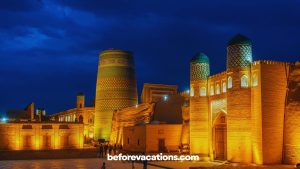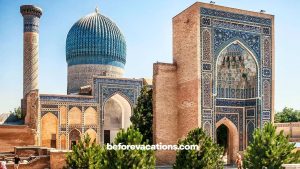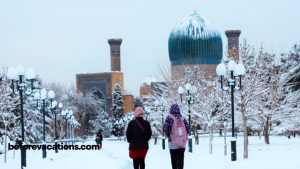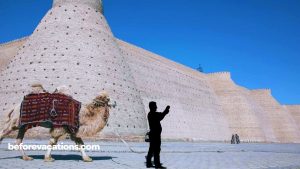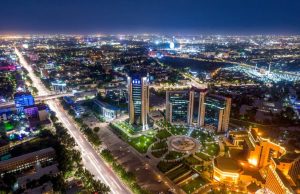The Timeless Citadel: Why Bukhara Old City Offers the Purest Silk Road Experience
Bukhara is often called Bukhoro-i-Sharif, or “Noble Bukhara.” This title was earned over two millennia. It was a crucial oasis on the Silk Road. Furthermore, Bukhara was the undisputed heart of Islamic learning in Central Asia. Unlike Samarkand’s imperial grandeur or Tashkent’s modernity, Bukhara Old City is the most complete and unspoiled example of a medieval Central Asian town. It preserves a tightly woven urban fabric. This preservation earned it UNESCO World Heritage status.
When you step inside, you leave the 21st century behind. You will be walking through narrow alleyways. Every corner reveals an ancient mosque, a hidden courtyard, or a caravanserai. This detailed guide serves as your roadmap to the Bukhara Old City Uzbekistan. It covers its most majestic monuments, spiritual highlights, and authentic cultural experiences. This ensures your journey through this historic city is both informed and deeply rewarding.
1. The Poi Kalyan Complex: Spiritual and Architectural Dominance
The Poi Kalyan Complex stands as the spiritual and architectural zenith of Bukhara, translating literally as “Foot of the Great.” This towering ensemble consists of three dominant structures that command the central square. The massive Kalyan Minaret, dating back to 1127 AD, is a masterpiece of brickwork and one of the oldest surviving structures in the city. Genghis Khan was so awestruck by its height and beauty during his invasion that he reportedly ordered it spared from destruction.
Next to the minaret is the Kalyan Mosque, large enough to hold over 12,000 worshippers. Its vast courtyard, lined by 208 pillars, provides an impressive sense of scale and devotion. Directly opposite stands the Mir-i-Arab Madrasah, an active Islamic school featuring a beautiful azure dome that makes it one of Bukhara’s most recognizable landmarks.
Travelers can admire its stunning facade and tilework. However, they should remember it remains a functioning madrasah. Therefore, tourist access to the interior is often limited. This limitation reinforces the city’s living historical status.
2. The Ark Fortress: A Millennium of Power and Command
Standing opposite the Poi Kalyan Complex is the colossal Ark of Bukhara, a massive earthen-walled citadel that served as the fortified residence for the ruling Khans and Emirs of Bukhara for over 1,500 years. The Ark is the city’s oldest structure, with foundations possibly dating back to the 5th century. It functioned as a symbol of state power and military might until the 1920s.
A visit to the Ark, with its colossal ramp-like entrance, offers a profound glimpse into the court life and complex history of the emirate. Inside the fortress walls, restored sections house several museums, including local history, numismatics, and archaeology.
Traveler Tip: While the interior museums may be moderately engaging, the exterior viewing experience is arguably superior. Consider visiting the park opposite the main gate, where the elegant Bolo Hauz Mosque stands. Twenty slender, carved wooden pillars support the towering iwan (entrance portal). These pillars reflect in the adjacent pool. This reflection gives it the local moniker, the “Mosque of Forty Pillars.”
3. Lyab-i Hauz: The Heartbeat of Old City Social Life
For a deep immersion into the traditional rhythm of Bukhara life, travelers must head to the Lyab-i Hauz complex. This charming central plaza is built around one of the city’s last remaining hauzes. Hauzes are ancient stone pools. These pools were once used as the main water source. Today, the pond is fringed by ancient mulberry trees. It is also surrounded by three significant monuments. These monuments are the Nadir Divan-Beghi Madrasah, the Kukeldash Madrasah, and the Nadir Divan-Beghi Khanaka, which is a Sufi monastery.
Lyab-i Hauz serves as the city’s timeless social center. Locals and tourists alike gather on the tea beds. These are known as tapchans. They sit under the shade of the trees to sip green tea, converse, and observe daily life unfold. Notably, the Nadir Divan-Beghi Madrasah features a highly unusual facade. This facade depicts mythical creatures. The creatures include a sun-face and two phoenixes carrying deer. This is a rare and fascinating departure from conventional Islamic art. Islamic art typically forbids the depiction of living things. This area comes alive in the cool of the evening. It becomes the perfect spot for dinner and people-watching.
4. Tracing Commerce: The Ancient Trading Domes and Bazaars
Bukhara’s identity is inseparable from its history as a trade hub. The Silk Road’s commerce left behind a unique architectural legacy: the Trading Domes, or taqis. These massive, vaulted structures were built over crossroads to regulate trade and provide shade for merchants. Four domes remain largely intact and still function as vibrant marketplaces today.
Walk through the Toqi Zargaron (Jewelers’ Dome) and the Toqi Telpak Furushon (Headwear Sellers’ Dome) to truly appreciate the atmosphere of the 16th-century market. While they primarily sell souvenirs, textiles, and spices aimed at tourists today, the architectural authenticity is striking.
Engaging with the artisans who practice traditional crafts like copper engraving and miniature painting inside these domes offers a strong connection to the historical traditions that sustained Bukhara for centuries. Furthermore, these compact, covered markets are perfect for quick exploration even during the midday heat.
5. Hidden Gems and Spiritual Secrets: Samanid Mausoleum and Chor Minor
Exploring the quieter corners of Bukhara Old City reveals its most treasured historical jewels. The small, intricately patterned Ismail Samani Mausoleum is a masterpiece of 10th-century Islamic architecture, renowned for its delicate basket-weave brickwork that shifts texture and shadow throughout the day. This mausoleum is the final resting place of the founder of the Samanid dynasty. Many consider it one of the finest examples of Central Asian architecture. It even predates much of the Timurid splendor.
Another must-see site, though located slightly further from the center, is the peculiar Chor Minor Madrasah. Its name means “Four Minarets,” referring to the four turquoise-domed turrets that crown its entrance gate. Although historically modest, the structure’s unique and whimsical design makes it instantly recognizable and a favorite for photographers. Finally, seek out the partially subterranean Magoki Attori Mosque, one of the oldest mosques in Bukhara, built upon the ruins of a Zoroastrian temple, showcasing the region’s deep cultural layering.
A City of Living History
Bukhara offers a dense, walkable, and profoundly historical experience unmatched by almost any other city on the Silk Road. Its preserved architecture, from the formidable Ark to the peaceful hauz pools, paints a clear picture of its noble past as a center of faith and commerce. By dedicating at least two full days to walking its sun-drenched streets, you will gain an intimate connection with this 2,500-year-old oasis.
For travelers looking to deepen their understanding of the wider dynasty that shaped this region, we highly recommend exploring the details of Tamerlane’s burial site, the Gur-e-Amir Mausoleum Samarkand Tour Guide.
Start Exploring: Ready to walk through two millennia of history? Book your stay in a traditional Bukhara guesthouse located near Lyab-i Hauz to start your journey into the heart of the Old City!

